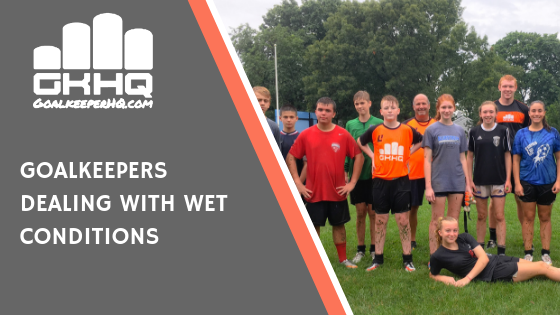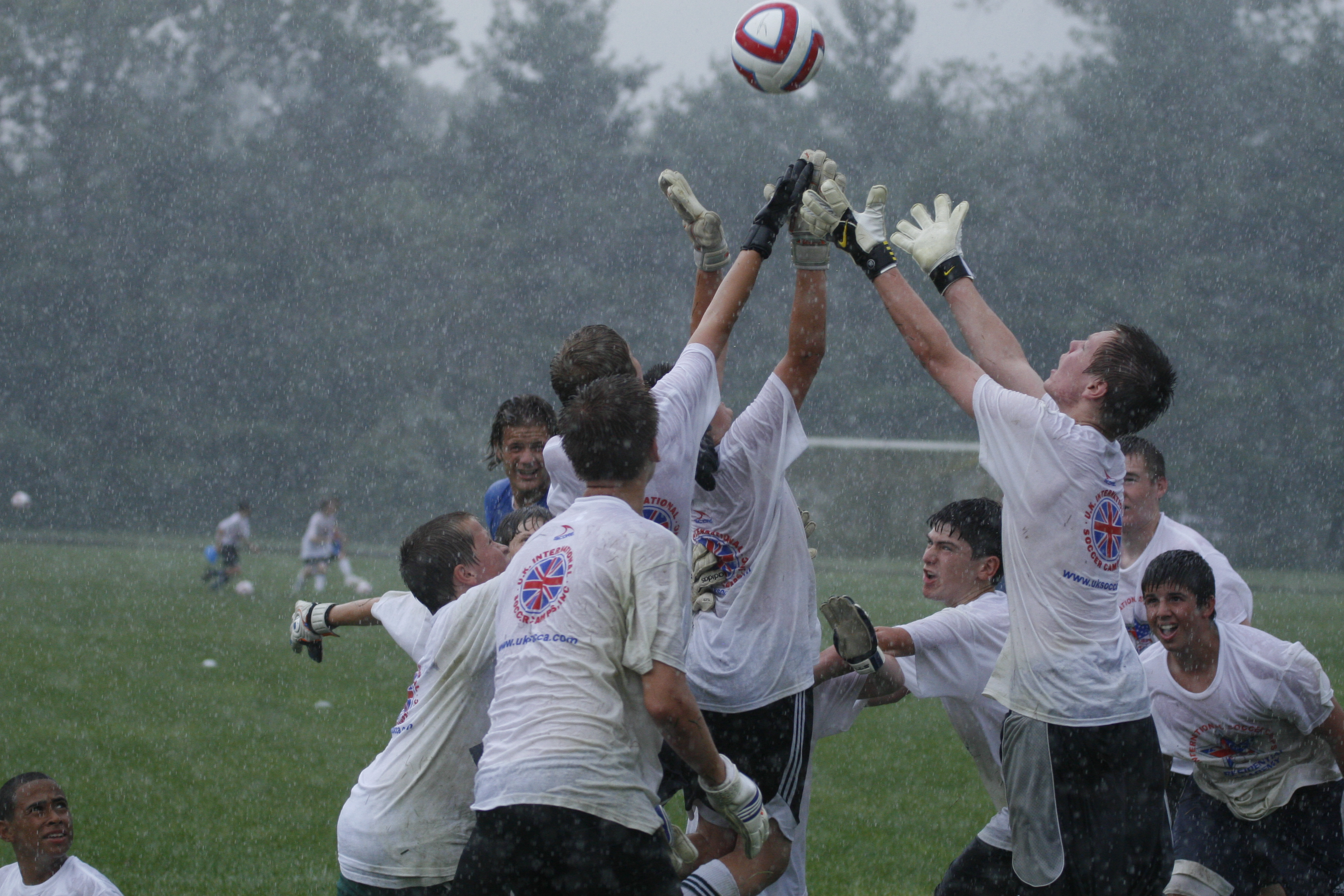UPDATED!
Here are some thoughts considering wet weather conditions. Wet conditions can be fantastic for goalkeepers and goalkeeper coaches alike, but if not prepared for, it can lead to an unproductive session as being soaked through, especially when wind and colder weather are involved or the session is longer than an hour can be very uncomfortable.
As I wrote in the article of dealing with cold weather, which was one of the most popular posts, I am amazed at the number of young goalkeepers that do not prepare or dress appropriately.
Here are some tips that will help during wet conditions. Some tips are for training and practices and others are for games.
Bring a rain jacket – The wearing of a rain jacket keeps under layers dryer for longer. The aim is to have your base layer dry throughout the session to allow you to perform at your best. Once wet on that base layer, you get a constant reminder of uncomfortable shock whenever you move your body or when the wind blows.
The rain jacket also allows for great sliding due to low friction.
Have a towel to dry gloves – You may have seen some pro’s bring towels out to a game and place on the goal net in televised games. The towel can be used for a number of things but during wet weather, the towel is used to remove excess water or mud from the match gloves. When fully saturated or if covered in mud particles, almost all gloves loose grip.
Tighter gloves are better – Having the correct size glove is important and one of the reasons Goalkeeper HQ produce L1 Goalkeeper gloves. The half sizes and adjustable straps should fit most goalkeepers nicely. The 90’s fashion of wearing gloves that are large has now gone and goalkeepers should be aiming for a tight fitting glove that also allows for good movement. Big gloves become cumbersome in wet conditions.
Consider finger spine protection – Although not the first choice for many older goalkeepers, goalkeeper gloves with spine protection in the fingers can serve a purpose in wet conditions. With wet conditions, the ball is likely to skid off the surface faster. This may mean you do not get your hands in the appropriate position or you are unable to take the ball early enough to get a good enough tip around the post. The finger protection provides additional strength that in wet conditions could lead to the ball going around the post as opposed to sneaking in. The additional finger support may also give additional confidence when collecting high balls or crosses. L1 Aquilae Gloves offer optional finger protection.
Changing decision making when shot stopping – Safety first. When shot stopping, goalkeepers have to make a decision to catch, tip or parry the ball. Wet conditions may mean that a normal decision to catch the ball may not be successful.
Surgical gloves under GK gloves – This little trick has kept many hands dry and warmer during wet conditions. The thin nature of the surgical gloves means goalkeepers you do not lose feel for the ball. These gloves often come with a powdered interior keeping hands dry throughout.
Be aware of bounce – A wet skidding ball picks up speed as it hits the ground. (Although it has been pointed out to me that this, according to physics cannot be possible) Be aware of your penalty area and the potential for the ball to act differently in different areas of the penalty box. This area of concern is reduced on turf fields. A good warm-up prior to the game will provide the goalkeeper with some good experience in dealing with skidding balls prior to the game.
Good footwork needed for second barrier – The second barrier is when any part of your body is in the way of the ball if your hands let you down. This requires good footwork and is a healthy staple of all good goalkeeper coaching. The need for the second barrier is highlighted in wet conditions as the ball can slip through hands.
Use of the “K” technique – One of the handling techniques along with “scoop”, “Front smother”, “basket”, “Contour/W’s”. The K is used as an in-between scoop and basket in which the goalkeeper does not go to ground such as in the front smother but turns legs sideways to create a “K” shape. This is done to provide as big a second barrier as possible in the event of an unpredictable bounce. You can get a full lowdown on all these methods in the course “The basics of goalkeeping” or free if you are a Goalkeeper HQ member.
Be ready and prepared for “Second Save” – Wet conditions present the imperfect world for goalkeepers with skids, faster balls and lack of grip on gloves and body. Goalkeepers should be prepared to make a second save if necessary if the ball pops out. Second saves should ideally be leading with hands and be as quick as possible.
Treat each half of games like a new game – This can apply to games or if goalkeepers are asked to join the team after a wet goalkeeping session. Have a spare pair of dry gloves ready to put on and a new jersey if possible to feel as good as new as possible.
Have some spare clothes – Otherwise, the journey home will be miserable
Have big trash bags ready in the car – Wet, dirty goalkeepers can ruin car interiors. If you are a parent reading this, you should have protection of your vehicle. If the goalkeeper has not changed into cclean/dry clothes, ensure they take off the outer layers and put in a trash bag ready to be washed when home. Use the other bags to protect against car seats and carpets.

